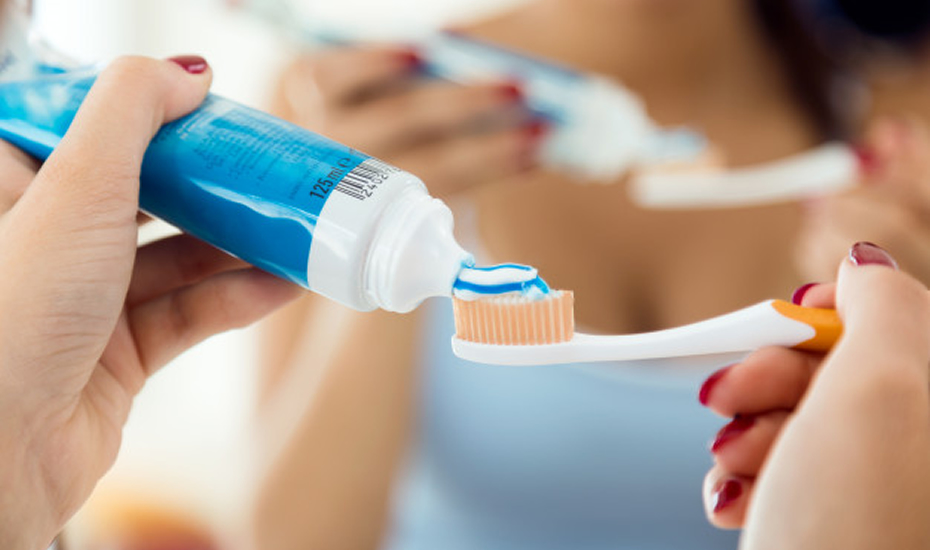
Why is brushing with toothpaste important?
First and foremost, a toothpaste and a correct brushing action work to remove plaque, a sticky, harmful film of bacteria that grows on your teeth that causes caries, gum disease, and eventual tooth loss if not controlled.
Second, the toothpaste if contains fluoride, makes the entire tooth structure more resistant to decay and promotes remineralization, which aids in repairing early decay before the damage can even be seen.
Third, special ingredients in the toothpaste help to clean and polish the teeth and remove stains over time.
Fourth, toothpastes help freshen breath and leave your mouth with a clean feeling.
What type of toothpaste should I use?
As long as your toothpaste contains fluoride, the brand you buy really does not matter. All fluoride toothpaste work effectively to fight plaque and cavities and clean and polish tooth enamel.
If your teeth are hypersensitive to hot or cold, consider trying a tootpaste designed for sensitive teeth.
Some prefer a tartar control toothpaste containing pyrophosphates to prevent the buildup of soft calculus deposits on their teeth. New pastes offer advanced whitening formulas aimed at safely removing stains to make teeth brighter and shinier, although they can’t nearly match the effectiveness of a professional bleaching formula administered or prescribed by a dentist.
How much should I use?
Contrary to what toothpaste commercials show, the amount of paste or gel needed on your brush for effective cleaning does not have to be a heaping amount. Simply squeeze on a pea-sized dab of paste on the top half of your brush. If you brush correctly holding the toothbrush at a 45-degree angle and brush inside, outside and between your teeth, the paste should foam enough to cover all of your teeth. Children under 6, however, should only be given a very small, baby pea-sized dab of dentifrice on their brush.
DIFFERENT KINDS OF TOOTHPASTES
Advertising can be very seductive! This statement is especially true with respect to dentifrices (toothpastes).The recent proliferation of specialty toothpastes has clogged store shelves and confused many patients. Advertisements seem to suggest that we need a tartar control toothpaste for removing tartar, a whitening toothpaste to brighten teeth, and even a gum care toothpaste to prevent gum disease. What is the most effective toothpaste?
Toothpastes vs. Gels
Only their physical appearance and a taste is the difference between pastes and gels. While gels may seem less abrasive than pastes,this is not the case. Actually, gels can be more abrasive because of the silica used to make them. However, both are safe, effective cleaners; use whichever you like!
Desensitizing Toothpastes
These pastes do actually work for a majority of the people using them. Generally, they are needed when a patient has had gum recession, thereby exposing the root of the tooth. Once this exposure occurs, a tooth can be sensitive to cold, hot, touch, sweet, or sour. Senquel,Thermoseal,Thermodent K are some of the brands on the market.New ones come on the market regularly. Some brands have different ingredients; therefore, if one brand does not work, try a different brand. Note: you should have any sensitivity checked by your dentist first to be sure it is not a more serious problem.
Whitening Toothpastes
One must be careful when using these due to their abrasiveness. These should not be used exclusively but should be incorporated into a routine using a fluoride paste. Do not use a whitening paste every time you brush; use only once every day or two. Certain brands can be more abrasive than others. Their efficacy is questionable.Some people claim to notice a brightening of tooth color, while others notice no change. This difference is partly due to variety in diet and tooth structure among people. If you are serious about whitening your teeth, you should discuss various options, including bleaching, with your dentist.
Denture Pastes
While it’s true that more people are keeping their teeth, those who use full or partial dentures need to keep them clean. What to use? Not surprisingly, there are denture cleansers that safely and effectively clean dentures. These products contain a mild abrasive and detergent plus a flavoring agent. If you run out of denture paste, use soft hand soap or mild dishwashing liquid to clean dentures.
In Conclusion:
Brush with a FLUORIDE toothpaste for 2 minutes at least twice a day using a soft bristled toothbrush. Most people only brush their teeth for about 15-20 seconds on average! The mechanical action employed using the proper brushing technique is more important than the brand of toothpaste you purchase. Flossing at least once a day is also very important because it removes food from between teeth where even the best toothbrush and toothpaste are ineffective.
